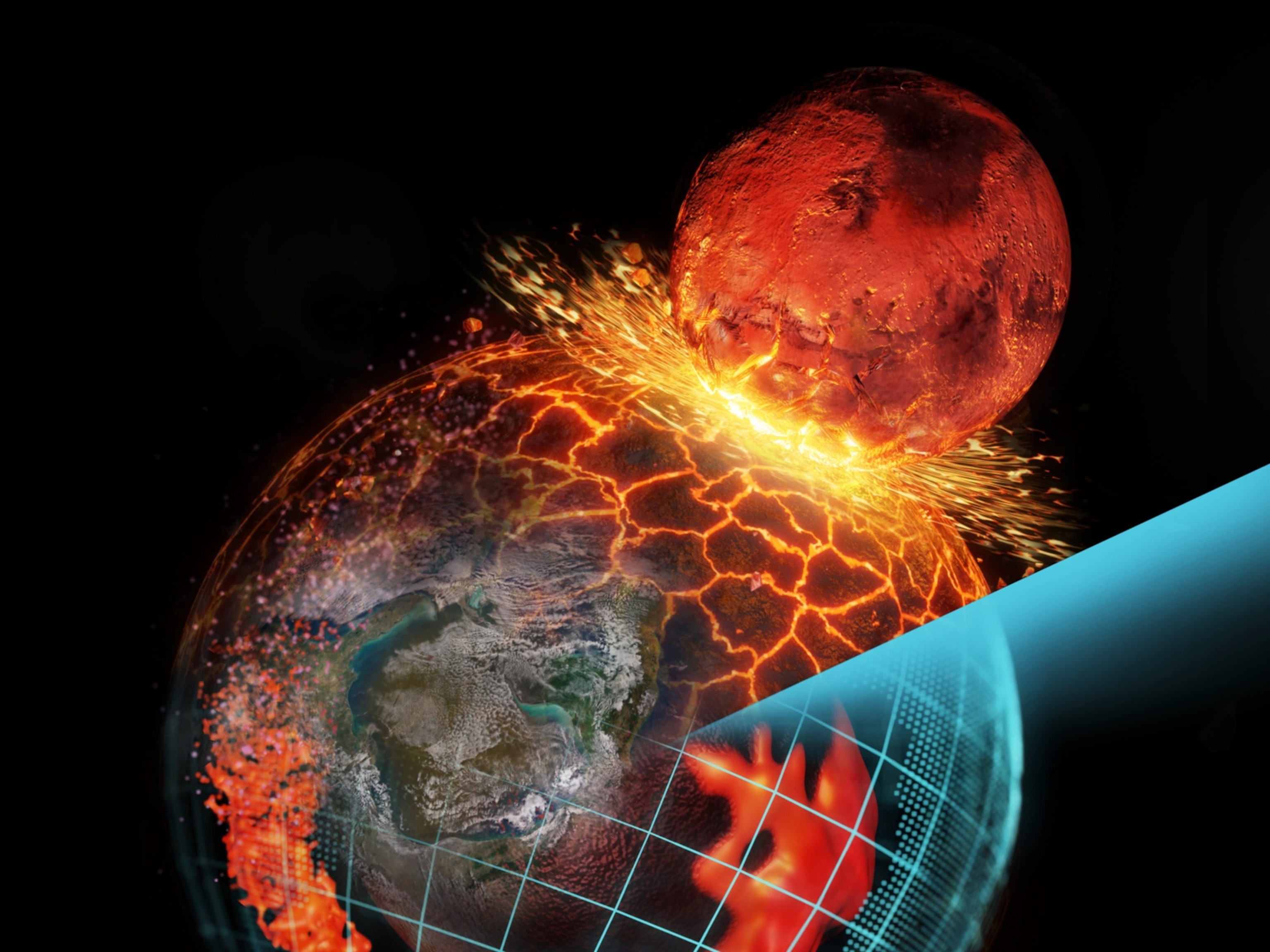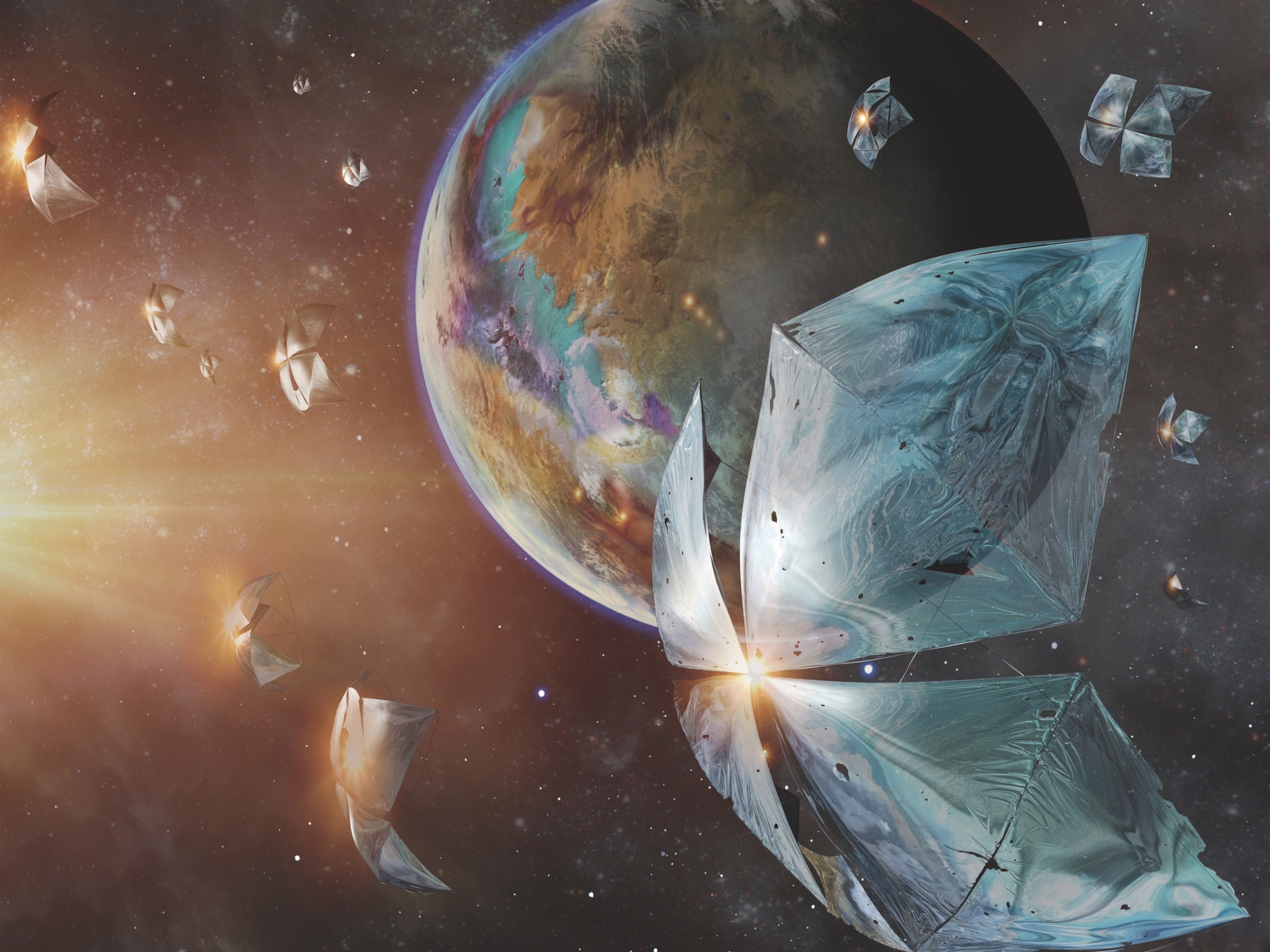
A new super-Earth may orbit the star next door
Subtle shifts in the motion of the nearby star Proxima Centauri suggest that it may host not one but two alien worlds.
BERKELEY, California — Not just one, but two planets might be orbiting the nearest star to our sun, a small red dwarf called Proxima Centauri that’s about 4.24 light-years away.
“We are pleased to show you, for the first time, what is for us a new candidate planet around Proxima that we call Proxima c,” Mario Damasso of Italy’s Observatory of Turin initially announced during the 2019 Breakthrough Discuss conference. A paper describing the potential planet appears today in the journal Science Advances.
“It is only a candidate,” Damasso continued. “This is very important to underline.”
If the planet is there, it’s at least six times as massive as Earth—making it what’s called a super-Earth—and it takes 1,936 days to loop once around its star. That means the planet’s average surface temperature is much too cold for liquid water to flow.
“Is this planet habitable? Well, not really—it’s quite cold,” says Fabio Del Sordo of the University of Crete.
Castle in the air
In 2016, scientists with the Pale Red Dot project revealed the first known world orbiting Proxima Centauri—a planet at least 1.3 times as massive as Earth that’s perhaps warm enough for life as we know it to thrive on its surface. Scientists identified that planet, called Proxima Centauri b, by studying how its gravity tugs on Proxima Centauri and causes the star to wobble.
Recently, Damasso and Del Sordo decided to revisit the data used to spot Proxima b. They processed it somewhat differently, removed the signals from Proxima b and intrinsic stellar activity, and added 61 measurements made over an additional 549 days by the HARPS spectrograph, mounted on a telescope at Chile’s La Silla Observatory.
In total, they then had approximately 17 years’ worth of data on the star’s wiggles and wobbles. In it, they spotted a signal that could be another planet in orbit around Proxima Centauri. If it’s there—and that’s still a sizable “if”—Proxima c takes a little more than five Earth-years to trudge once around its star, orbiting at a distance that’s 1.5 times farther than Earth is from the sun.
“This detection is very challenging,” Del Sordo says. “We asked ourselves many times if this is a real planet. But what is sure is that even if this planet is a castle in the air, we should keep working to put even stronger foundations under it.”
Eyes on the prize
Scientists are going to continue collecting data on the star and are planning on using information from the European Space Agency’s Gaia spacecraft to further study the motion of Proxima Centauri, which would refine their interpretation of its wobbles. They also suggest that the planet could be seen directly with future telescopes.

As well, observations of the star made by the Atacama Large Millimeter/Submilliter Array, or ALMA, may support the possibility that multiple planets are in orbit: In those images, Proxima Centauri is surrounded by dust lanes that are presumably being sculpted by orbiting objects. Plus, ALMA detected another bright source in the Proxima system, situated at approximately the distance where Proxima c might orbit.
“There is an unknown source—it’s something. It could be a background source, it could be noise; we don’t know,” Del Sordo says.
“This is really an amazing, amazing result—I hope it withstands scientific scrutiny over the next few months and years,” says Rene Heller of the Max Planck Institute for Solar System Research.
Lauren Weiss of the University of Hawaii suggests that the team might be seeing a signal caused by a combination of other planets in the system, as well as stellar noise.
“Maybe there are additional planets, but not at the period at which you’re announcing the candidate,” she told Damasso and Del Sordo during the conference. “I don’t know really what we can do, except what you rightly said to do—continue monitoring … it’s going to be a long road.”





